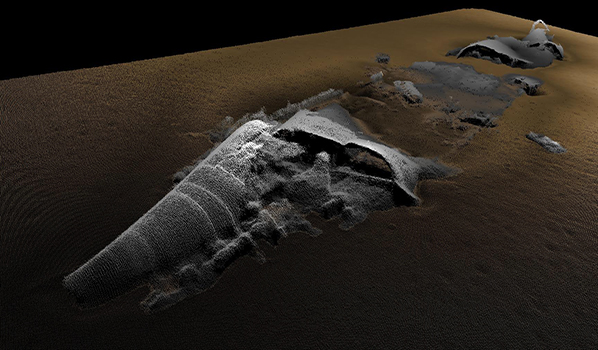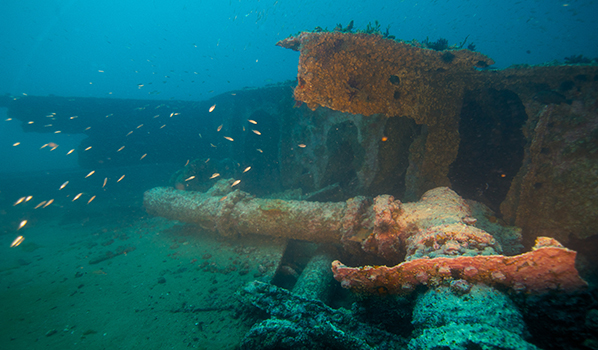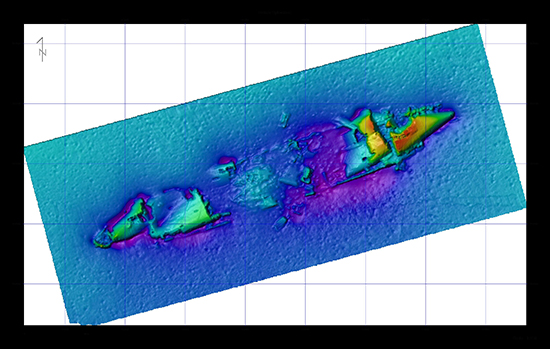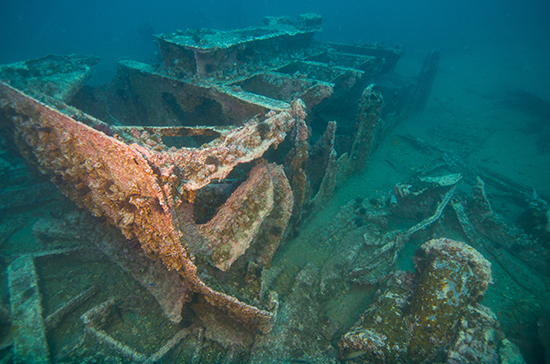British Splendour
Ship Stats
Location: 34°49'7.54"N, 75°54'10.91"W (34.81876, -75.90303)
Depth: 100 feet
Vessel Type: Tanker Breadth: 59.7 feet
Gross Tonnage: 7,138 Cargo: 10,000 tons of benzene (gas/fuel)
Built: 1931, Palmer's Shipbuilding and Iron Co., Newcastle, England, United Kingdom
Hull Number: Unknown Port of Registry: London, United Kingdom
Owner: British Tanker Co. Ltd., London, England, United Kingdom
Lloyd's Register Details: Steel hull, two decks, flat keel, single screw, diesel motor, two stroke cycle single acting oil engines
Former Names: N/A
Date Lost: April 7, 1942
Sunk By: U-552 Survivors: 41 of 53 survived (12 dead)
Data Collected on Site: Multibeam sonar image; still and video photography
Significance: Casualty of World War II's Battle of the Atlantic
Wreck Site
The British Splendour wreck rests in about 100 feet of water, 35 miles southwest of Cape Hatteras, North Carolina. At that depth, with shifting sands and variable currents, site conditions vary over the course of a year creating an ever-changing environment.
When British Splendour sank, the vessel settled upside down, as evidenced by the hull plating facing toward the surface. The remains of British Splendour have a small section of high relief, located at the stern of the vessel.
Historical Background
British Splendour, a tanker that sank in 1942. Model is by NOAA's Monitor National Marine Sanctuary on Sketchfab
Built in 1931 by Palmer's Shipbuilding and Iron Company, British Splendour carried fuel for the British Tanker Company of London. During World War II, British Splendour continued to carry fuel and in early April 1942, the tanker left Houston, Texas to meet with a British convoy in Nova Scotia.
British Splendour cruised off the North Carolina coast with escort vessels HMS St. Zeno (FY-280) and HMS Hertfordshire (FY-176) nearby. On the night of April 7, 1942, U-552 patiently followed an unsuspecting British Splendour. Around 10:00 pm, a single torpedo was fired at the vessel striking the port side near the engine room. Immediately, the ship was disabled and 12 crew members were killed instantly. Fire spread throughout the ship, and when it reached the storage areas, the fuel in the cargo hold ignited and engulfed the ship. The crew was ordered to abandon ship, and within two hours, the vessel sank. Forty-one crewmembers survived, were rescued and later taken to Norfolk, Virginia.






